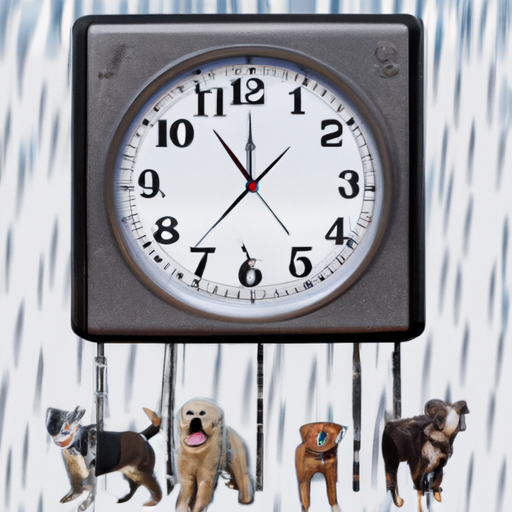Why Walking Your Dog on a Leash is Necessary
As a caregiver, you understand that everyone under your care, including your furry friend, needs an environment that’s not only safe but also stimulating. Walking your dog on a leash is not just about controlling their movements. It’s a means of:
- Protecting them from dangers like traffic or aggressive animals.
- Ensuring they don’t wander off and get lost.
- Building a bond between you two.
The Ideal Length of a Leash Walk
Now, the question is, how long should these walks be? The answer isn’t cast in stone as it depends on several factors including your dog’s:
- Age
- Breed
- Health status
As a general rule of thumb though, vets recommend at least 30 minutes to 2 hours on an average daily walk.
The Benefits of Regular, Leashed Walks
Walking your dog on a leash daily has numerous benefits including:
-
Physical Exercise: Dogs, like humans, need regular exercise to maintain a healthy weight and overall good health.
-
Mental Stimulation: The sights, sounds, and smells encountered during a walk provide mental stimulation, keeping them engaged and happy.
-
Behavioral Improvement: Regular walks can help alleviate behavioral problems like excessive barking, chewing, or digging.
Factors Influencing Walk Duration
| Factor | Influence |
|---|---|
| Age | Young, energetic dogs may need longer, more frequent walks, while older dogs may do with shorter, less strenuous ones. |
| Breed | Some breeds have more energy and require more exercise. Others, like brachycephalic breeds, may struggle with long walks. |
| Health | If your dog has health issues, like arthritis or heart disease, you may need to adjust the walk duration accordingly. |
Tailoring the Walk to Your Dog’s Needs
Every dog is unique and it’s important to tailor the walk duration to their individual needs. Start with a short walk and gradually increase it, observing your dog’s response. Always consult with your vet before making significant changes to your dog’s exercise routine.
FAQ
Q: Can I walk my puppy for the same duration as an adult dog?
A: Puppies have a lot of energy but they also tire quickly. Start with short walks and gradually increase as they grow.
Q: My dog is reluctant to walk, what should I do?
A: Try making the walk more interesting with toys or treats. If reluctance continues, consult your vet.
Q: Is it okay to skip a day of walking?
A: While regular walks are important, an occasional day off won’t harm your dog. Just ensure it’s not a habit.
Q: Can I walk my dog off the leash?
A: It’s safer to keep your dog on a leash, especially in public places. Some areas also have leash laws.



